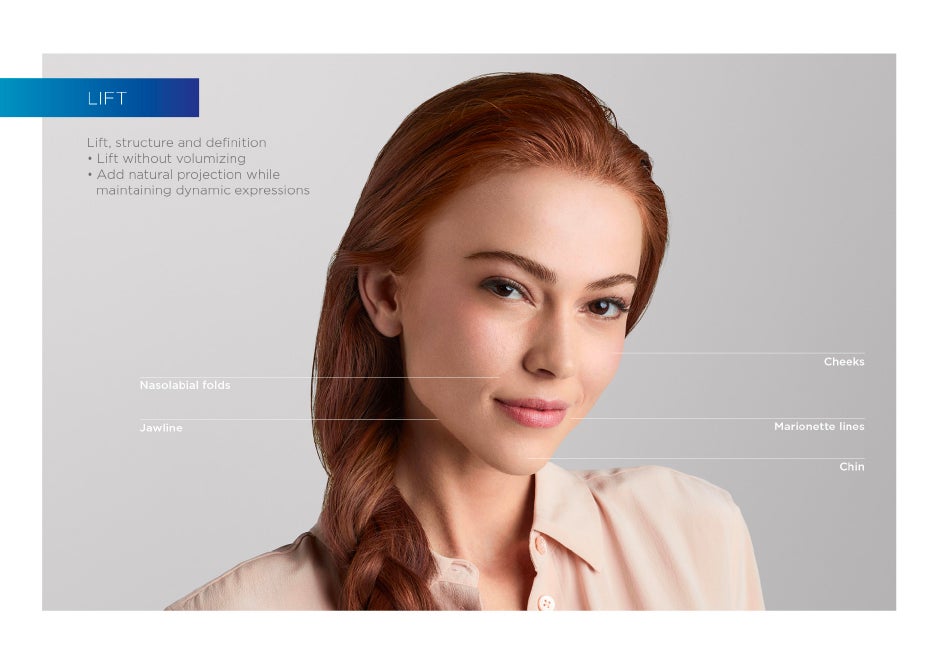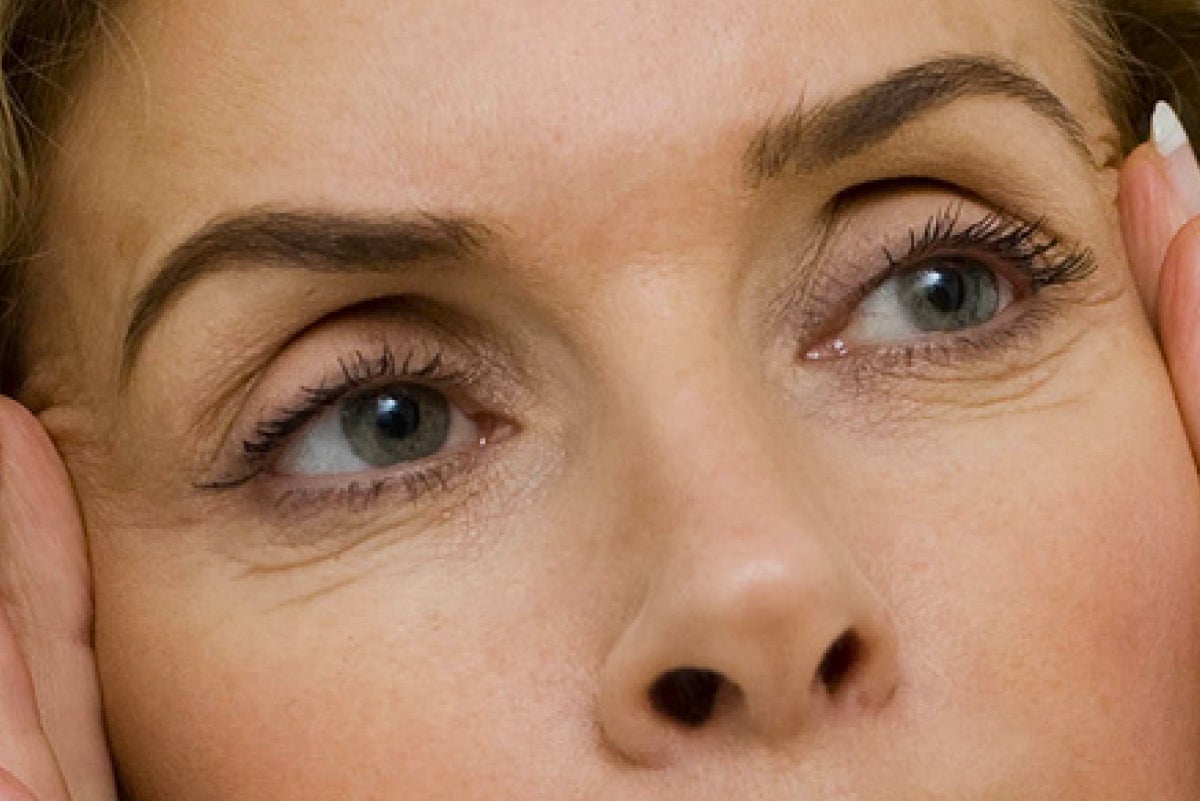
Restylane Defyne and Restylane Lyft are fillers that give good support, providing long-lasting shape, structure, and definition to areas such as your nose, chin and jawline, and to fill wrinkles and folds.1 Restylane Defyne and Restylane Lyft help you sharpen up your look while remaining true to yourself.
Why Lift with Restylane?
Our facial bones give shape and structure to our face. As we age, bone resorption increases, leading to loss of definition and contours, especially at the posterior part of the jawline. Another consequence of aging is volume loss in the mid face, which could lead to flat cheeks, saggy skin and jowling. Creating a lift with Restylane will compensate for these changes. Another reason to use Restylane Lyft could be that you have a desire to enhance your facial features and bring out your individuality, no matter your age.
Restylane Defyne and Restylane Lyft can be tailored to any individual look to give you the freedom to be original. Restylane Lyft is our firmest dermal filler and is suited for lifting the cheeks, enhancing the jawline or chin, or reducing the appearance of wrinkles.2 If you have a thinner tissue coverage, you may prefer Restylane Defyne as it is slightly softer and more flexible. Treatments with Restylane Defyne last up to at least 1 year.3 Restylane Lyft lasts up to at least 24 months with one retreatment.4

Restylane treatment areas
Restylane Defyne and Restylane Lyft are dermal fillers that give precise results, creating a projection or a lift of the treated area. Areas that can be treated include the chin, jawline, cheeks and nose bridge.
“I have patients that look the same or better now than they did 15 years ago.”
Steven Weiner, plastic surgeon, USA

Your Restylane treatment
A treatment with Restylane takes approximately 15-45 minutes, depending on the area that will be treated. Sometimes you might need a touch-up treatment about two weeks after the initial treatment to optimize your results. Restylane fillers often contain a local anesthetic, lidocaine, that takes away most of the discomfort during treatment.
Immediately after your dermal filler treatment, you may experience some post-treatment side effects, such as redness, swelling, pain, bruising or tenderness at the treatment site. These side effects usually disappear within a few days or up to two weeks after injection. Though fillers are minimally invasive, they still carry some risks. Before the treatment, you should discuss all possible risks and benefits with your healthcare practitioner.
Restylane gives you long-lasting but non-permanent results, meaning that you can continuously refine your looks.

How it works
Hyaluronic acid is a substance that has a unique ability to bind water. Hyaluronic acid occurs naturally in our bodies and in all layers of our skin. It keeps our body tissues soft, hydrated and flexible. However, as we age, the body’s ability to produce hyaluronic acid lessens, leading to dry and thinner skin and loss of youthful volume.
Native hyaluronic acid in the body degrades quickly, in one to two days. To make the hyaluronic acid in Restylane Defyne and Restylane Lyft last longer— for up to at least a year or even two years5 - Galderma has used stabilization technologies that delay degradation.
Restylane Defyne and Restylane Lyft contain hyaluronic acid gels that provide good support to maintain structure and projection.
Restylane was the first-ever non-animal stabilized hyaluronic acid filler, when it was launched in 1996. It has become the gold standard of dermal fillers and is the injectable filler every other filler brand is compared with.

References
- Data on file (MA-39364).; Weiss RA et al. Dermatol Surg 2016;42:699–709.; Narins RS et al. Dermatol Surg 2011;37:644–650.
- Kablik J et al. Dermatol Surg 2009;35(Suppl1):302–312.; Weiss RA et al. Dermatol Surg 2016;42:699–709.; Narins RS et al. Dermatol Surg 2011;37:644–650.
- Ascher B et al. Dermatol Surg 2017;43:389–395.
- Data on file (MA-39364).
- Ascher B et al. Dermatol Surg 2017;43:389–395.; Data on file (MA-39364).


 Back to top
Back to top